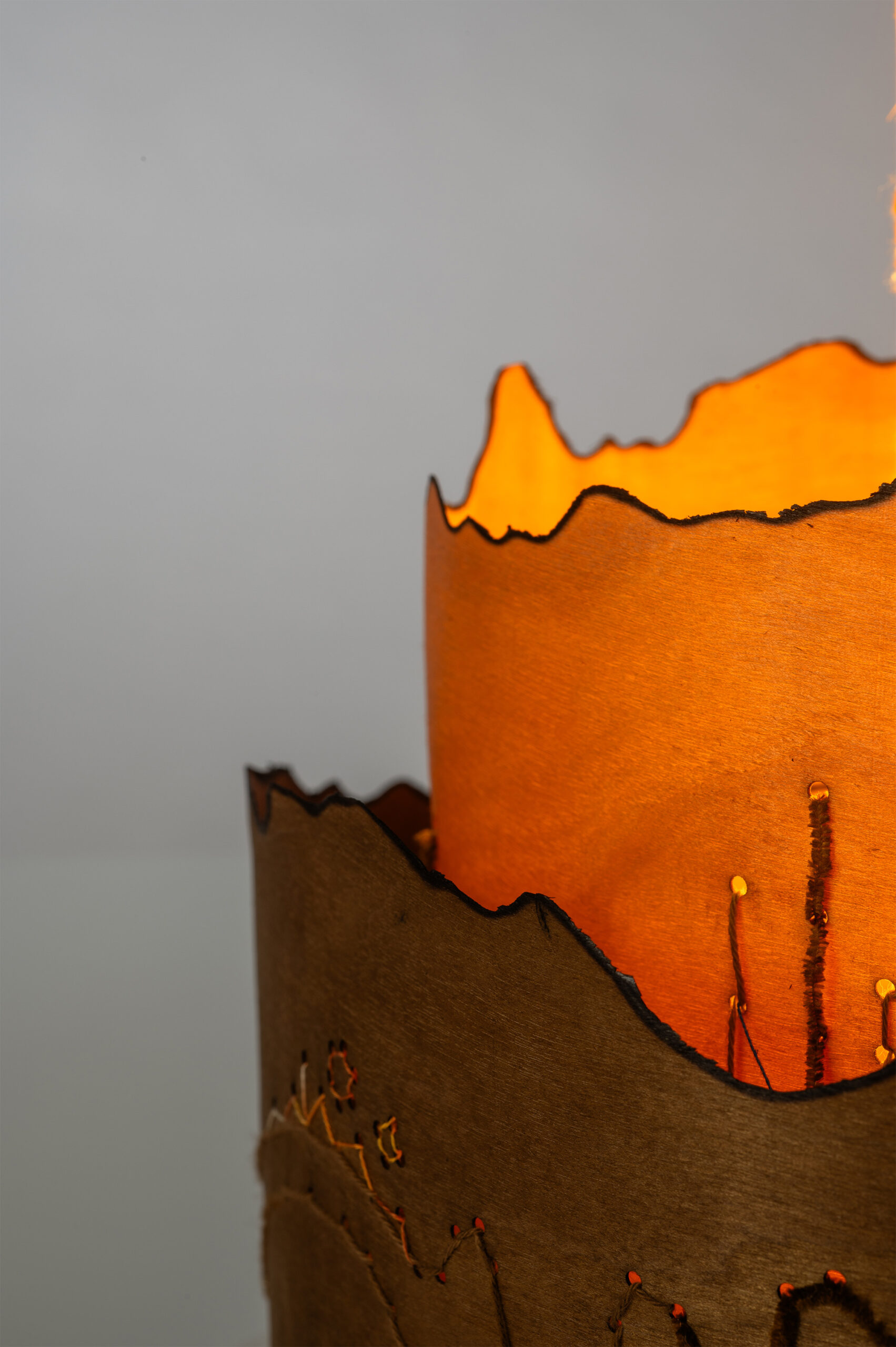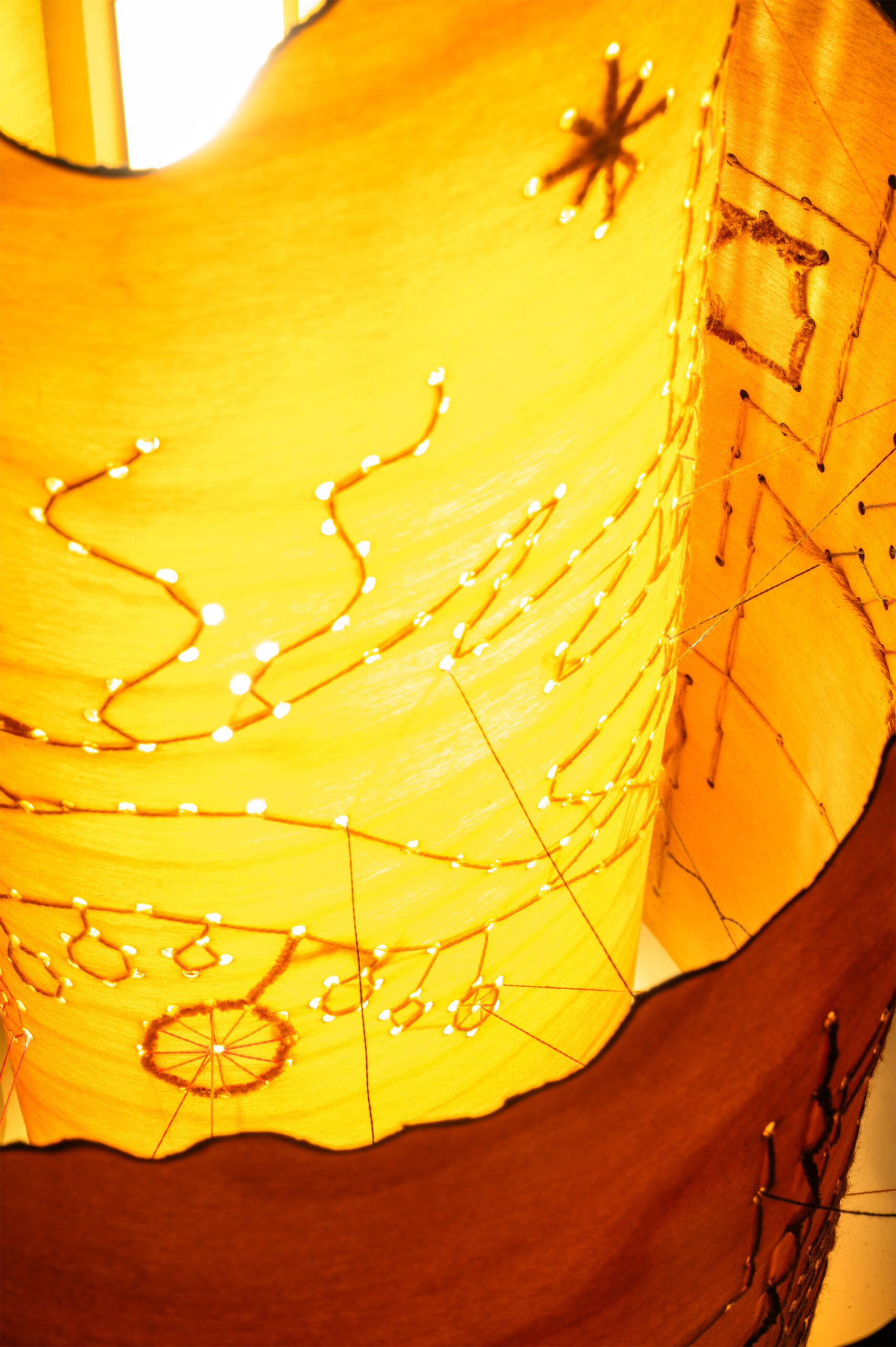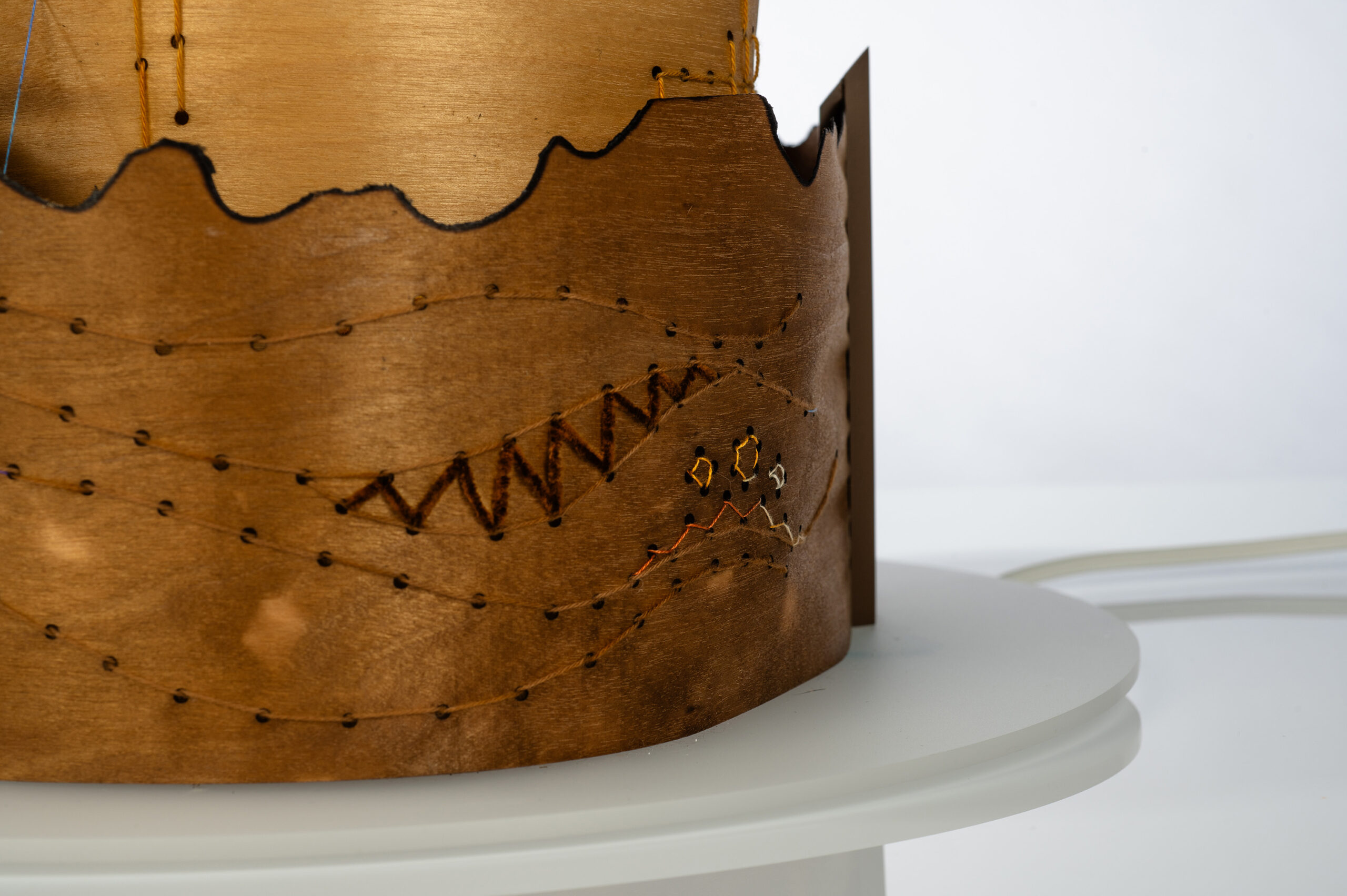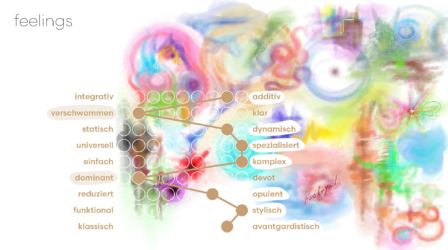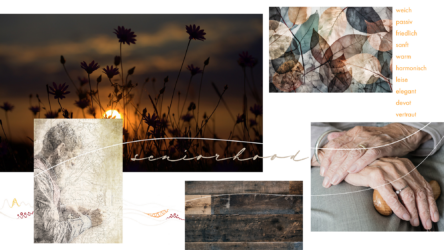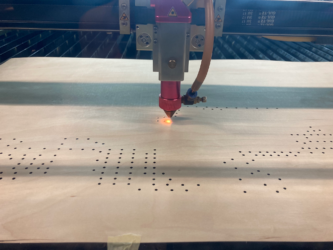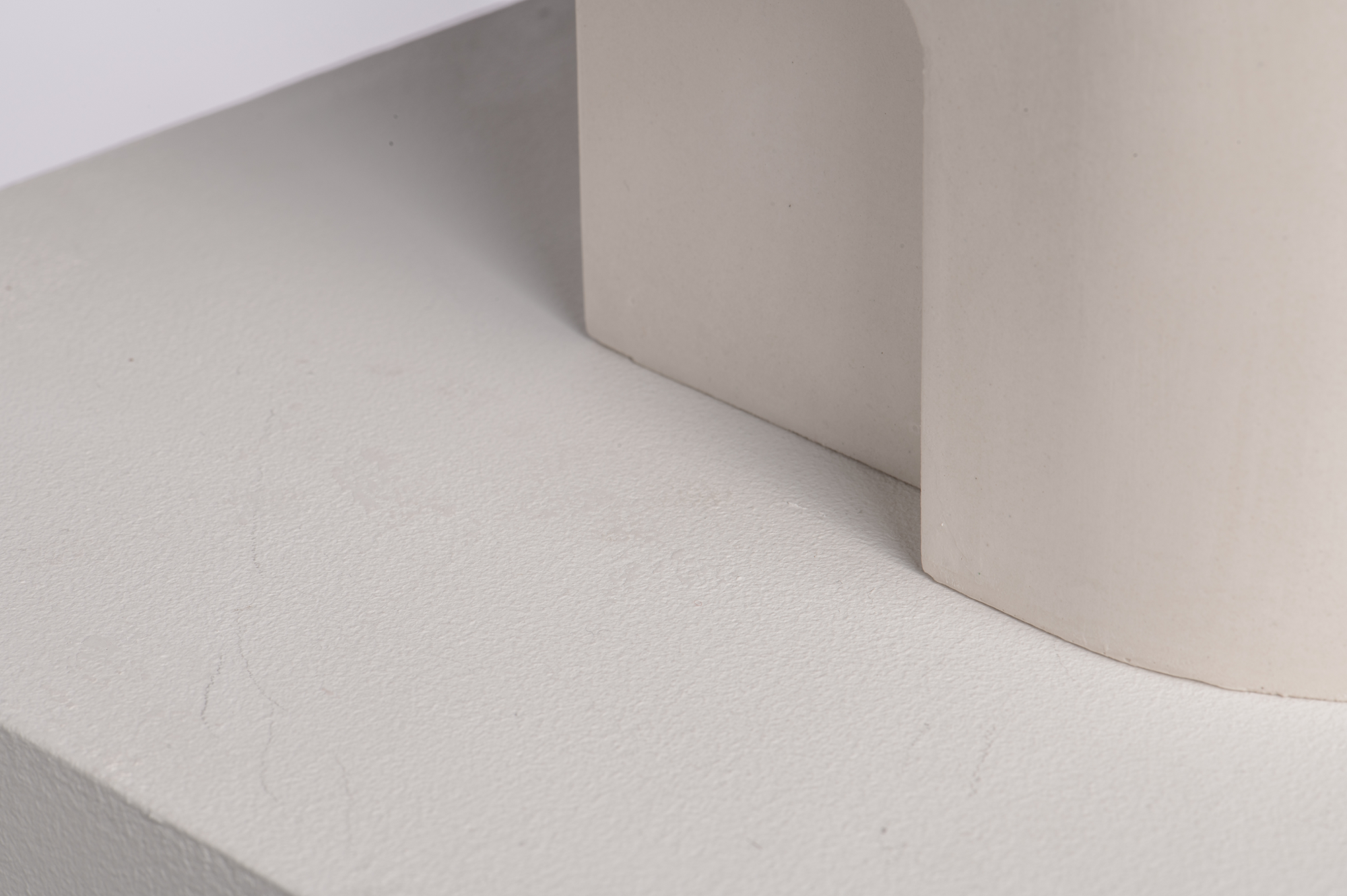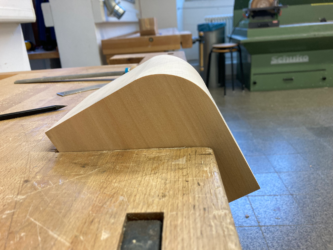life lamp
Februar 2024In diesem interdisziplinären Projekt dreht sich alles um die Technik der Stickerei. Den meisten Menschen ist nicht bewusst, was Stickerei genau ist und wo sie überall Anwendung findet. Zu Beginn habe wir uns deshalb mit der Geschichte, den Techniken und Materialien der Stickerei beschäftigen und sie selbst ausprobiert, um diese dann in ein eigenes Designkonzept einbauen zu können. Themengebend ist der Hand & Lock Embroidery Prize und das dazugehörige Briefing.

My lifelamp characterizes with its veneer layers the three parts of human life. We grow up in a playful, colorful and bright childhood, walk into a straight, rigid and boring adulthood and finally we get to a calm and balanced „seniorhood“. I took the stereotype to the extreme to symbolize the differences between each span.
The light from the middle of the lamp shines though the wooden layers and the small holes of the embroidery. It symbolizes our life energy becoming less intense with time. It also shows the influence of the parts to each other and their connection, displayed by the small, colorful yarns.
Having read the briefing, two words stuck out to me: transformation and layer. Reminding me of trees, which grow new layers over and over, while the old remain visible.
After my first brainstorming on the topic, I decided to focus on something, that struck my personal interests: the development of a human. We are affected by our education, people around us and things we experienced throughout our life.
Thereby I noticed the word „shine through“ a lot and I liked the analogy of a lamp where the light shines through the lampshade. Also I wanted to combine embroidery with my study program of Product Design and the possibility to stitch on solid materials. With the topic of transparency, I used wood veneer, because the layers are so thin, that the light shines through the wooden structure and thus said structure becomes visible.
After the decision of designing a wooden lampshade, I started to brainstorm on how to transfer the human development onto a lamp. Many layers turned into three layers, showing the childhood, adulthood and „seniorhood“. I analyzed these three stages of life to their semantic effect.
Coming from the decision of making embroidery on veneer, I experimented with different kind of wood (maple, birch, beech) and several stitching technologies (with pre-drill, lasercutting or a wet veneer without pre-work). Also, I tried different dimensions of holes and yarns. I liked it, when the light shines through the small holes, so I decided to make them much bigger than the yarn.
During the progress we considered dying the veneer with natural materials after it’s already embroidered. This way the yarn and the wood would get the same or maybe a different colour. For this part I conducted several experiments with three kinds of yarn, a small piece of birch veneer and five different dying materials: madder, red sandalwood, birch leaves, buckthorn bark and onion skins. I evaluated the results and chose the warm colour of the onion skin for dying the entire lamp shades. For the big pieces we used a whole pot. During the final dying session, the veneer turned into a brown colour, rather than the bright yellow. Due to full natural materials you can never predict the final result. The brown colour also matched my concept, showing the naturalness and transience of the human life.
My working process was as followed: I designed the graphics of the embroidery, lasercutted the holes, soaked the wood in water, bended it into cylindric shades. After drying I embroidered the veneers with two different white yarns and dyed them in the onion skin water bath, each for a different time span. For the lamp I built three mounts out of ureol, fillered and coated them with a brown lacquer. For the bottom I provided a frosted acrylic glass and cutted it in a round shade, pre-drilled some holes and glued small transparent feet on the bottom. With the mounts I was able to stick the veneers together and fixed them on the ground. At last, I stuck in the led-stripe and layed the cable through the bottom.
After the lamp was finally standing, I took three smaller yarns with different colour gradients, fitting each of the veneer-themes, and embroidered some details. Also, I jumped from layer to layer to symbolically show the connection of the three parts of life.
Lastly I scorched the upper edge of the veneers to show how life burns down slowly.


